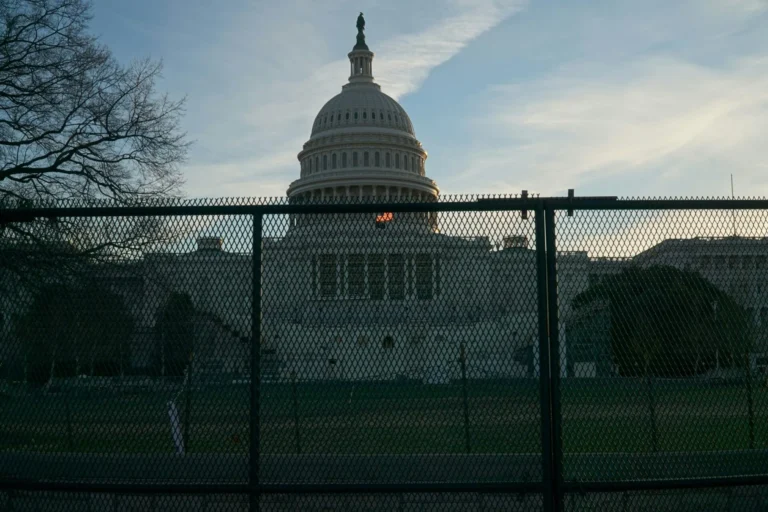By Cliff Montgomery – Nov. 15th, 2010
The current global monetary system “allows the US to run high deficits and it prolongs a situation in whichcapital flows ‘uphill’…from poor countries to the richest country of the world,” stated a fascinating independentfinancial study from 2006.
Though it’s four years old, FONDAD’s analysis of our monetary system seems even more profound today.
Forum on Debt and Development (FONDAD) “is an independent policy research center and forum forinternational discussion established in the Netherlands,” according to the Forum’s self-description printedwithin the 2006 report.
“Supported by a worldwide network of experts, it provides policy-oriented research on arange of North-South problems, with particular emphasis on international financial issues.”
The American Spark offers quotes from the study’s introduction, written by FONDAD Director Jan JoostTeunissen:
“The US debt problem is currently an issue of intense discussion. However, it was an issue of intense debateas well in the 1960s and early 1970s as I discovered some 24 years ago.
“In 1982, I spent half a year in Latin America and in my meetings with economists the debt problems of LatinAmerican countries were one of the topics we discussed – at the time an increasingly hot issue, and a fewmonths after I arrived the debt crisis broke out in August 1982.
“Towards the end of my stay, my lack of intimate knowledge about the post-war history of the internationalmonetary system became painfully clear in an interview I had with a famous Brazilian economist.
“One evening in October 1982, I was lucky enough to have an interview with Brazilian professor of economicsMaria da Conceição Tavares, whom I knew was admired by her followers and feared by her opponents.
“When I began the interview, I asked her, in a broad, open question, to give a brief account of the origins ofBrazil’s debt problems.
“To my surprise, she shouted to me, undignified, that the problem of Latin America’s debt crisis had not startedwith the oil crisis of 1973-74, or with the irresponsible borrowing by governments and the irresponsible lendingby commercial banks, but with the debt problem of the United States!
“I was flabbergasted.
” ‘What do you mean?’ I stammered.
” ‘Don’t you understand?’ she said, softening her tone. ‘You should read [Belgian economist] Robert Triffin. Asearly as 1959, Triffin wrote that it was a crazy thing to have the dollar as the key currency of the world. He said,’This is a lunatic way of organizing the system, the US is going to be imbalanced, the dollar will be in crisis andat some point in time the whole system of fixed exchange rates will collapse.’
” ‘Triffin even criticized the world’s monetary system when the [British] sterling pound was the dominant money.He was always against, as [British economist John Maynard] Keynes was, this idea of having an internationalsystem with the dominant power in meeting the money.
” ‘So was [Argentine economist Raúl] Prebisch in 1947, when the IMF established its rule.
” ‘Triffin and Prebisch said, if it went wrong with England, then with the US it would be worse. The US is acontinental and closed economy whose pattern of imports and exports and production will be incompatible witha central role in the system. In the new division of labor that is likely to emerge all kinds of countries willindustrialize.’ “
“I [since have] learned many things from the books, articles and historical archive I [have] read. The story thatunfolded page after page was fascinating.
“How on earth could [America] – this huge, rich and highly industrialized country – get into trouble with itsbalance of payments? Why was it increasing its foreign debt year after year?
“The answer was simple. Every dollar held by a foreigner meant by definition that the United States owed adollar to that foreigner, since a dollar bill is nothing else than a piece of paper that says, ‘I owe you’.
“Sure, something else was needed to make US’ foreign debt a problem. As long as the United States spent asmuch abroad (providing aid, importing goods, having military forces abroad, having multinational corporationsinvesting abroad) as it received from abroad (foreign firms and countries investing in the United States, USfirms exporting goods, US multinational corporations receiving money from abroad), its net debt to foreignerswould be nil.
“However…the United States was spending more than it earned. It was ‘living beyond its means’.”
“It is now easy to understand why Professor Maria da Conceição Tavares shouted to me in 1982 that LatinAmerica’s debt crisis had started with the foreign debt problem of the United States.”
“Briefly, Tavares’ argument was that because Western countries maintained the dollar as the key currency ofthe system, and ‘petrodollars’ were recycled through the private banking system, [by]…the 1970s commercialbanks were able to increase their role in the world financial system and lend huge sums of money to LatinAmerican and other emerging market countries.
“Then, when the US central bank [i.e., the Federal Reserve] sharply increased its prime interest rates in 1979,to halt inflation and make the dollar attractive again to foreign investors, commercial banks extended newloans to Latin American countries so that these countries could continue to service their debts.
“These new loans were necessary because the interest rate on old loans had increased sharply – in line withthe Federal Reserve’s prime rate.
“In technical terminology, the new loans were ‘roll-over credits’ [read, ‘continuous and exploding debt’ foremerging countries].
“[So] Instead of financing development in Latin America, …[money] went straight back to the banks. This wasanother reason for Tavares’ anger.”
“In 1984, [former European Central Bank President] Willem Duisenberg…told me:’The situation we are in now is completely absurd. A sound situation would be that the rich countries lend orgive money to the poor countries. There should be an export of capital in the form of loans and grants from therich to the poor countries. But, surprisingly, the richest country in the world, the United States, actually importscapital from all over the world. In this sense the United States is being financed by the rest of the world,including the developing countries.’ “





